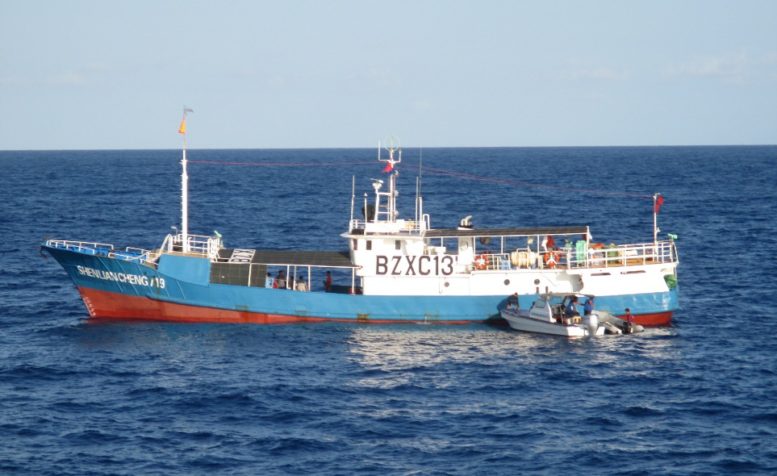With over 2 million square kilometers of coastal and oceanic waters connecting the archipelago, the Philippine fishery is one of the major sources of food and income of the population. This area contains a common property resource – fishery and aquatic – that needs protection for the present and future generations.
Recent reports indicate that among the country’s major economic sectors agriculture, which includes fisheries, is the “weakest” registering a dismal performance of 0.15% growth in the first 9 months of 2018 compared with 4.59% in 2017. The fisheries sub-sector posted continuous downward trend in the last 5 years due to climate change, aging and diminishing ranks of fishermen, and numerous tropical cyclones. Aquaculture posted some improvement in harvests, but the commercial and municipal fishing showed a downtrend. While the contraction of 0.9% in 2017 is lower than the previous year of 4.0%, the reduction of fisheries harvest has become more evident.
Of the 3 principal sources of fishery harvests the combined yield of commercial and marine fishing during 2011-2017 represents less than the aquaculture outputs. This means Filipino fishers have not thoroughly exploited the vastness of the fishing grounds, including the Benham Rise and Scarborough Shoal where the Chinese have established control over that rich marine area since 2012. Apart from the Chinese, Vietnamese and Taiwanese fishers continue to poach our borders to gather fish and other marine products. The anticipated ocean temperature rise will further reduce fish harvest by 10-30% by 2050.
Since the 1950s, fish stocks in South China Sea have dwindled by no less than 70%. This is largely caused by the China’s high demand of fish when its fishing fleet, the world’s largest, concentrated on South China Sea after depleting the stocks in East China Sea and the Yellow Sea. China’s fish consumption is 20% more than the world’s average and is expected to increase 5-10 years from now. In 2014, China’s fish produce reached 17% of the global output, making it the world’s top fish produce exporter. With rising population and diminishing fish stocks in its jurisdictional waters, China will continue to dispatch its fishing fleet far beyond its maritime borders. Some quarters argue that fishery resources that may trigger conflict in South China Sea rather than energy and other seabed resources.
The prevalence of illegal, unregulated, unreported (IUU) fishing has reached an alarming level that a number of concerned international organizations, including the UN Food and Agriculture Organization (FAO), have committed to support the Fishery Resources Monitoring System. This will assist the goal of sustainable fishing by providing “scientific evidence on the status and trends of fishery resources.” One group, Secure Fisheries – One Earth Future, conducts science-based research with policy-oriented approach to build sustainable fishery practices, improve food and economic security, and combat IUU. The research papers will certainly help many countries that are inundated with fishery concerns.
The Philippines like other maritime nations must prevent depletion of its fishery resources from man-made intervention. Its Constitution clearly states: “The State shall protect the nation’s marine wealth in its archipelagic waters, territorial sea and Exclusive Economic Zone (EEZ), and reserve its use and enjoyment exclusively for Filipino citizens.” The fundamental law also highlights the rights of subsistence fishermen and local communities in the preferential use of marine and fishery resources. With the UN Permanent Court of Arbitration upholding the country’s sovereign rights over its EEZ and cited the environmental degradation caused by China’s military facilities in the Spratlys, the Philippine authorities must come up with necessary measures to protect its marine resources.
Fishery protection need not lead to hostile military acts if the threat comes from another sovereign state. Verbal expressions and unfavorable diplomatic acts may achieve the same impact if properly calibrated. Some verbal displays of displeasure could include condemning specific actions, making accusations, failing to reach an agreement, requesting change in policy, and holding a civilian protest. Diplomatic moves to underline disagreement include lawsuits, non-adherence to existing agreements, seeking arbitration, trade ban, fishing ban, high fines, and closing ports.
But the Indonesians have a peculiar way of sending a strong message to those who illegally gather their fishery resources: torching the fishing boats. Recently, Indonesia called for a global pushback on IUU. The Vietnamese too had one: a civilian-led condemnation rally against a bully. These two nations showed that “silence is not an option” and that a “defeatist attitude” would embolden the transgressor, undermine the fighting spirit of the maritime forces, and dampen the patriotism of the people.
For domestic threats, our fishery maritime forces must have an effective and efficient force capability to detect, prevent and suppress persons and groups engaged in IUU activities, and must have support capability to investigate and prosecute the perpetrators. Coordination and cooperation between and among the maritime forces will surely lead to better fishery protection. The Navy should do their work in stealth, away from prying eyes. As Winston Churchill once remarked: “Much if not most of the Navy’s work goes unseen.”
The importance of protecting the national patrimony in the maritime domain is best exemplified by the US when its Congress added in 2017 a new task for the US Navy: anti-illegal fishing. Traditionally performed, and still being performed, by the coast guard and other law enforcement agencies, the countering of illegal fishing by naval units as well stresses the urgency of arresting the alarming decline of fishery resources. This not only assures food security but also enhances the ecological systems.
The enthusiasm and persistence to recover the Balangiga Bells must likewise be made evident in recovering the Scarborough Shoal and other features in the South China Sea to demonstrate a firm resolve to protect our nation’s fishery resources.
